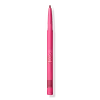What's inside
What's inside
 Key Ingredients
Key Ingredients

 Concerns
Concerns

 Ingredients Side-by-side
Ingredients Side-by-side

Propylene Glycol Dicaprylate/Dicaprate
EmollientPhenyl Trimethicone
Skin ConditioningPolyethylene
AbrasiveCeresin
Emulsion StabilisingPolyglyceryl-2 Triisostearate
EmulsifyingPolybutene
Synthetic Fluorphlogopite
Polymethyl Methacrylate
Microcrystalline Wax
Emulsion StabilisingPentaerythrityl Tetraisostearate
EmollientCaprylic/Capric Glycerides
EmollientCopernicia Cerifera Wax
Silica
AbrasiveDisteardimonium Hectorite
StabilisingTocopheryl Acetate
AntioxidantTriethoxycaprylylsilane
Aluminum Hydroxide
EmollientPropylene Carbonate
SolventPropylene Glycol Dicaprylate/Dicaprate, Phenyl Trimethicone, Polyethylene, Ceresin, Polyglyceryl-2 Triisostearate, Polybutene, Synthetic Fluorphlogopite, Polymethyl Methacrylate, Microcrystalline Wax, Pentaerythrityl Tetraisostearate, Caprylic/Capric Glycerides, Copernicia Cerifera Wax, Silica, Disteardimonium Hectorite, Tocopheryl Acetate, Triethoxycaprylylsilane, Aluminum Hydroxide, Propylene Carbonate
Propylene Glycol Dicaprylate/Dicaprate
EmollientPolyglyceryl-2 Triisostearate
EmulsifyingPolyethylene
AbrasiveCeresin
Emulsion StabilisingPhenyl Trimethicone
Skin ConditioningPropylene Glycol Dicaprylate/Dicaprate, Polyglyceryl-2 Triisostearate, Polyethylene, Ceresin, Phenyl Trimethicone, Dimethicone/Methicone Copolymer, Polymethyl Methacrylate, Silica, Polybutene, Microcrystalline Wax, Caprylic/Capric Glycerides, Pentaerythrityl Tetraisostearate, Triethoxycaprylylsilane, CI 15850
Ingredients Explained
These ingredients are found in both products.
Ingredients higher up in an ingredient list are typically present in a larger amount.
Caprylic/capric glycerides are a mixture of fats from caprylic and capric acids.
As an emollient, Caprylic/Capric Glycerides helps soften and moisturize the skin. Emollients create a moisture-trapping film on the skin.
Emulsifiers prevent ingredients from separating.
Learn more about Caprylic/Capric GlyceridesCeresin is a wax derived from ozokerite. It is an alternative to beeswax.
The most common process of creating ceresin is by using heat and sulfuric acid.
Microcrystalline Wax is created by de-oiling petroleum. It is highly refined and purified before being added to cosmetics.
Microcrystalline Wax is used to enhance the texture and create even consistency. It helps stabilize a product by preventing ingredients from separating.
Pentaerythrityl Tetraisostearate is derived from isostearic acid. It is an emollient and emulsifier.
The highest concentration of this ingredient is found in lipsticks.
This ingredient is minimally water soluble and may not be Malassezia folliculitis, or fungal-acne safe.
Learn more about Pentaerythrityl TetraisostearatePhenyl Trimethicone is a silicon-based polymer. It is derived from silica.
Phenyl Trimethicone is used as an emollient and prevents products from foaming.
As an emollient, it helps trap moisture in the skin. It is considered an occlusive.
Learn more about Phenyl TrimethiconePolybutene is used to help control the viscosity of a product. This just means it helps adjusts the texture.
It is a polymer and does not get absorbed into the skin due to its large size.
Studies found this ingredient did not irritate skin in concentrations below 15%.
Learn more about PolybutenePolyethylene is a synthetic ingredient that helps the skin retain moisture. It is a polymer.
It is also typically used within product formulations to help bind solid ingredients together and thicken oil-based ingredients. When added to balms and emulsions, it helps increase the melting point temperature.
This ingredient is a form of glycerin with emulsifying and emollient properties.
As an emulsifier, this ingredient helps keep products together while adding a thick texture. The manufacturer states this ingredient has emollient properties. Emollients help keep the skin hydrated by trapping moisture in.
Polyglyceryl-2 Triisostearate is created by reacting diglycerin and isostearic acid. Due to the isostearic acid base, it may not be safe for Malassezia or fungal acne.
Learn more about Polyglyceryl-2 TriisostearateThis ingredient is also known as PMMA. It is a polymer microsphere, composed of tiny, perfectly spherical particles formed from repeating units.
In cosmetics, PMMA is mainly used to give a soft or blurring effect. The transparent particles are able to scatter light and help reduce the appearance of fine-lines and imperfections.
PMMA is also able to enhance the texture of products by add a smooth feel.
Learn more about Polymethyl MethacrylatePropylene Glycol Dicaprylate/Dicaprate is a mixture of Propylene Glycol Dicaprylate and Propylene Glycol Dicaprate.
It is an emollient and helps hydate the skin.
Silica, also known as silicon dioxide, is a naturally occurring mineral. It is used as a fine, spherical, and porous powder in cosmetics.
Though it has exfoliant properties, the function of silica varies depending on the product.
The unique structure of silica enhances the spreadability and adds smoothness, making it a great texture enhancer.
It is also used as an active carrier, emulsifier, and mattifier due to its ability to absorb excess oil.
In some products, tiny microneedles called spicules are made from silica or hydrolyzed sponge. When you rub them in, they lightly polish away dead skin layers and enhance the penetration of active ingredients.
Learn more about SilicaTriethoxycaprylylsilane is a silicone used to bind and stabilize ingredients.
As an emulsifier, it helps prevent ingredients from separating. This can help elongate the shelf life of products.
Triethoxycaprylylsilane is often used to coat mineral sunscreens ingredients to help give a better feel. It also helps reduce oxidative stress in sunscreens.
Learn more about Triethoxycaprylylsilane